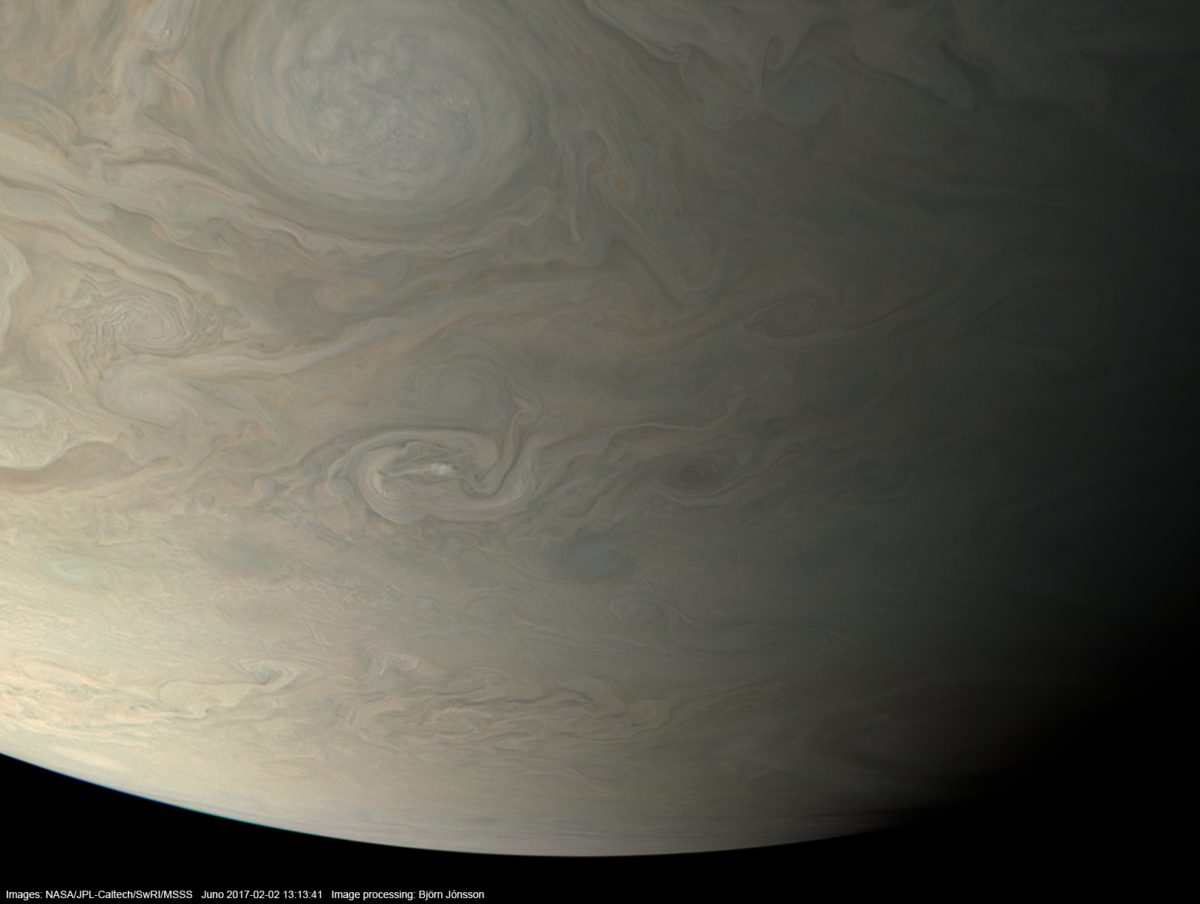Anna Scott • Mar 27, 2017
Juno just flew past Jupiter for the fifth time. What have we learned from the mission so far?
Early this morning, NASA’s Juno spacecraft performed its fourth science flyby of Jupiter, and fifth overall, buzzing the giant planet’s cloud tops at a height of just 4,400 kilometers.
These flybys show us amazing pictures. But recall that the Juno mission is not only about Internet fame, Instagram-glory, and a legacy of really cool space posters—it’s also helping uncover the mysteries of how the solar system formed by taking a deep look at Jupiter’s interior.

At last year’s American Geophysical Union conference, I got to sit in on the data unveiling from the spacecraft’s first flyby. Highlights of the session included magnetometer readings suggesting Jupiter’s dynamo generation is closer to the surface than previously thought, and I was also delighted to find out that Jupiter, just like Earth, has relative humidity. I also learned about proton whistlers, which are what comes up when lightning goes down—or more scientifically, electromagnetic waves in the upper atmosphere generated by lightning that travels along the planet’s magnetic field lines.
Listening to Juno Waves from #juno #agu16 pic.twitter.com/357XRGyUCz
— Anna Scott (@AnnaUnderTheSun) December 13, 2016
Let's unpack this.
First, the magnetometer readings: Juno’s magnetometer observes the planetary dynamo, the process responsible for a planet’s magnetic field. In short, this is due to the motion of an electrically-conducting fluid, at high temperatures and pressures in the rotating core of a planet. Mars used to have a dynamo, Earth has one, and Jupiter’s is the strongest in the solar system.
Juno’s first flyby measured the “greatest [magnetic] field strength any spacecraft has ever encountered,” greatly exceeding predictions, according to project scientist Alberto Adriani. The measurements suggest Jupiter’s dynamo is closer to the surface than previously thought. Where the dynamo generation occurs is something scientists have been unable to predict using only models, so having conclusive data is an exciting prospect.
As for relative humidity on Jupiter, I did not get a chance to ask about a heat index on Jupiter. I will say that at the 1000-degree-Kelvin temperatures detected, sweating probably wouldn’t be your biggest concern. However, humidity is a big concern for scientists, because the amount of water detected in Jupiter’s atmosphere will tell us how much oxygen is there. This will tell us if we are right about theories on how Jupiter—and, by extension, the solar system—formed.
The prevailing theory for gas giant formation, known as the core accretion model, says planets like Jupiter start out as small, rocky worlds that accumulate enough material to accrete a gaseous envelope. This suggests Jupiter’s chemical composition should closely mirror the Sun’s.
But it’s not clear how the smallest particles stick together, other than the fact that our universe is full of fully-formed planets. Other theories have been proposed, like the disk instability theory, which suggests that gravitational forces bind settling nebula particles together like a collapsing balloon. However, this implies that Jupiter doesn’t have a core, which scientists find unlikely.
In short, if we find that Jupiter is wetter than expected, we’ll have cast doubt on aspects of the core accretion model. From Juno’s first science pass, JIRAM, the probe’s infrared mapper, couldn’t comment on the profound implications of this, but did find low relative humidity inside one of the planet’s hotspots. That was expected—the Galileo mission found the same thing—but the information can still be useful in that it gives scientists a lower limit to how dry Jupiter is.
Seeing the data is exciting, but there are big questions left to be answered. What is Jupiter’s core made of? Are we right about solar system formation models? These are tough questions, and the answers will require lots more data, modeling, and interpretation, or in short, science.
NASA recently said peer-reviewed papers from Juno’s first flybys are coming soon. So stay tuned—Juno has a lot more to reveal about Jupiter.
Additional reading:
Support our core enterprises
Your support powers our mission to explore worlds, find life, and defend Earth. You make all the difference when you make a gift. Give today!
Donate

 Explore Worlds
Explore Worlds Find Life
Find Life Defend Earth
Defend Earth

